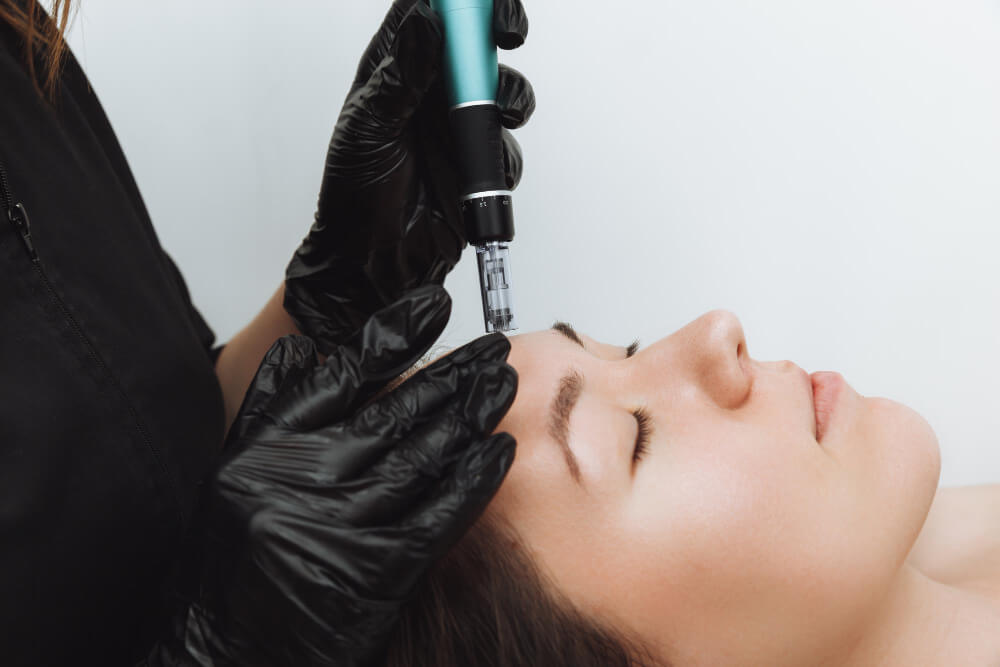Microneedling, also known as collagen induction therapy, is a popular non-invasive skin treatment that promises to rejuvenate the skin by harnessing the body’s own healing mechanisms. This procedure not only helps in reducing the appearance of wrinkles and scars but also enhances the overall texture of the skin. Let’s delve into the science behind microneedling, understand how it stimulates collagen production, and walk through what you can expect during and after the procedure.

 Understanding Microneedling
Understanding Microneedling
Microneedling involves using a specialized device equipped with fine needles. These needles create tiny punctures in the top layer of the skin, which act as a catalyst for the body’s natural healing process. The primary scientific principle behind microneedling is to induce a controlled injury to the skin, thereby prompting the body to respond by producing more collagen and elastin.
How Microneedling Stimulates Collagen Production
Collagen is the most abundant protein in our body, providing structure to not only our skin but also to bones, muscles, and tendons. As we age, collagen production naturally decreases, leading to the formation of wrinkles and other signs of aging. When the skin is wounded – even with small punctures from a microneedling device – it triggers a rapid healing response, accelerating the production of collagen and elastin to repair the skin. This increased collagen helps to fill in fine lines, making the skin appear firmer and smoother.
What to Expect During the Microneedling Procedure
Consultation: Your treatment will begin with a consultation where a skincare professional assesses your skin type, discusses your goals, and outlines the expected outcomes.
Preparation: Prior to the procedure, your skin will be cleaned and a topical numbing cream will be applied to minimize discomfort.
The Procedure: Using a microneedling device, the practitioner will make controlled micro-injuries to the skin. The device is typically rolled over the skin multiple times for thorough coverage.
Duration: The entire process usually takes about 30 to 60 minutes, depending on the area being treated.
Post-Procedure Care and What to Expect
Immediately after the procedure, it is normal to experience redness and mild swelling, similar to a mild sunburn. These symptoms typically subside within a few days. Here’s what you should consider in your post-procedure care:
- Hydration: Keep your skin well-hydrated with products recommended by your skincare provider.
- Sun Protection: Avoid direct sun exposure and apply a broad-spectrum sunscreen to protect the newly sensitive skin.
- Gentle Skin Care: Use gentle, non-abrasive cleansers and moisturizers to avoid irritating the skin.
Results
While some effects can be noticed almost immediately, the full benefits of microneedling are typically seen after a few weeks as the collagen production ramps up. For best results, most practitioners recommend a series of treatments, typically spaced about four to six weeks apart.
Conclusion
Microneedling offers a scientifically backed approach to skin rejuvenation. By promoting natural collagen production, it effectively addresses various skin concerns, making it a versatile and effective treatment. If you’re looking for a way to rejuvenate your skin naturally, microneedling might be the treatment you’re looking for.
Ready to try microneedling? Consult with a professional to see how this innovative procedure can benefit your skin.